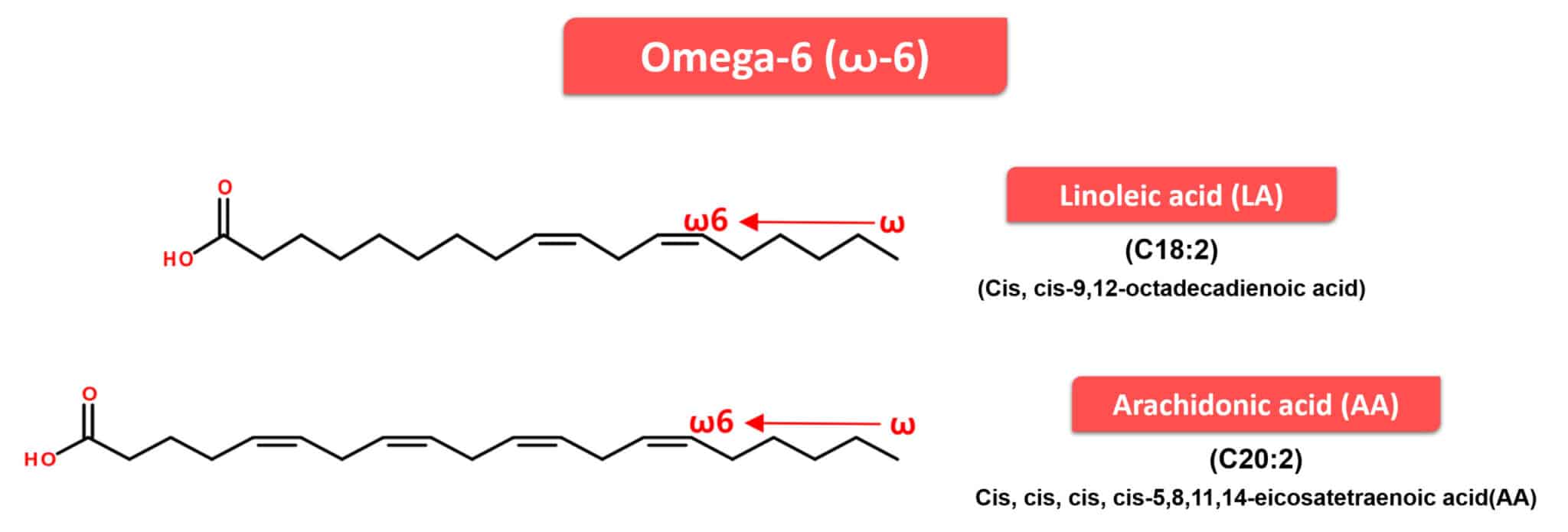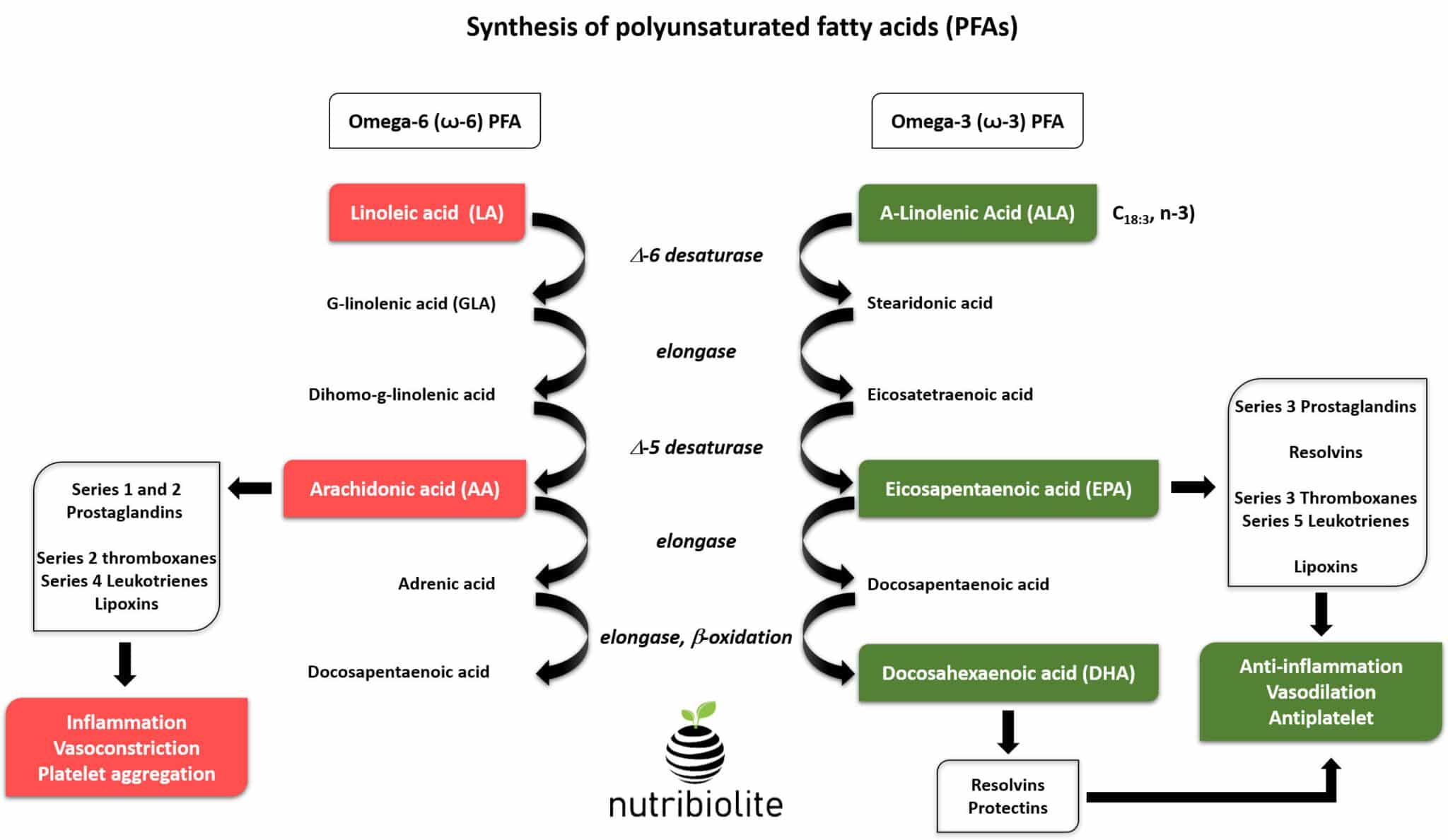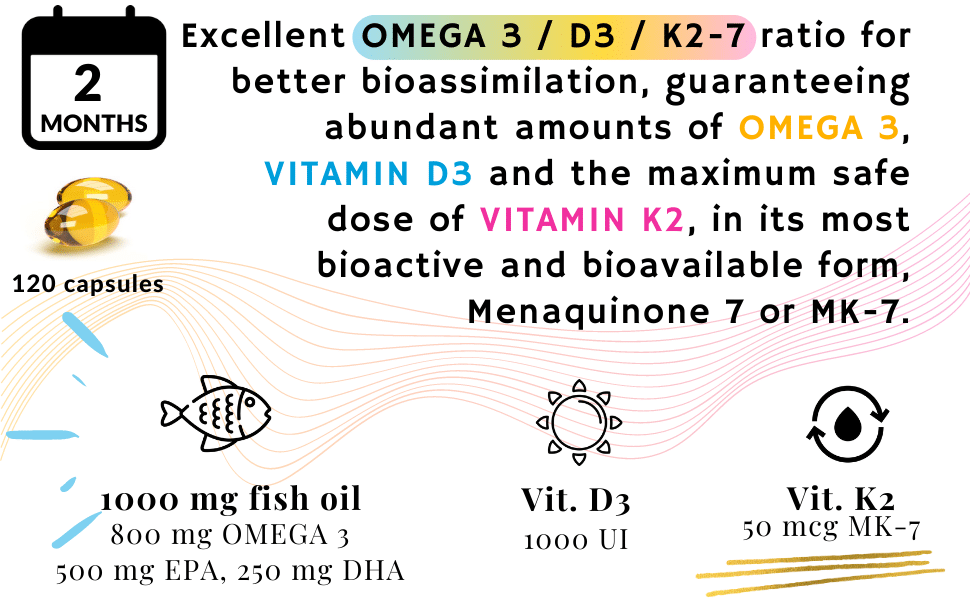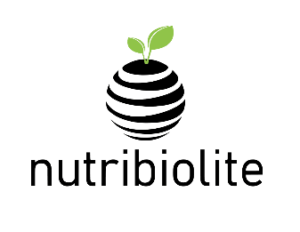Omega-3 + Vit D3 + Vit K2: The perfect combination
Omega-3 + Vit D3 + Vit K2: The perfect combination
In this article you will read:
Share
Categories
Trending posts
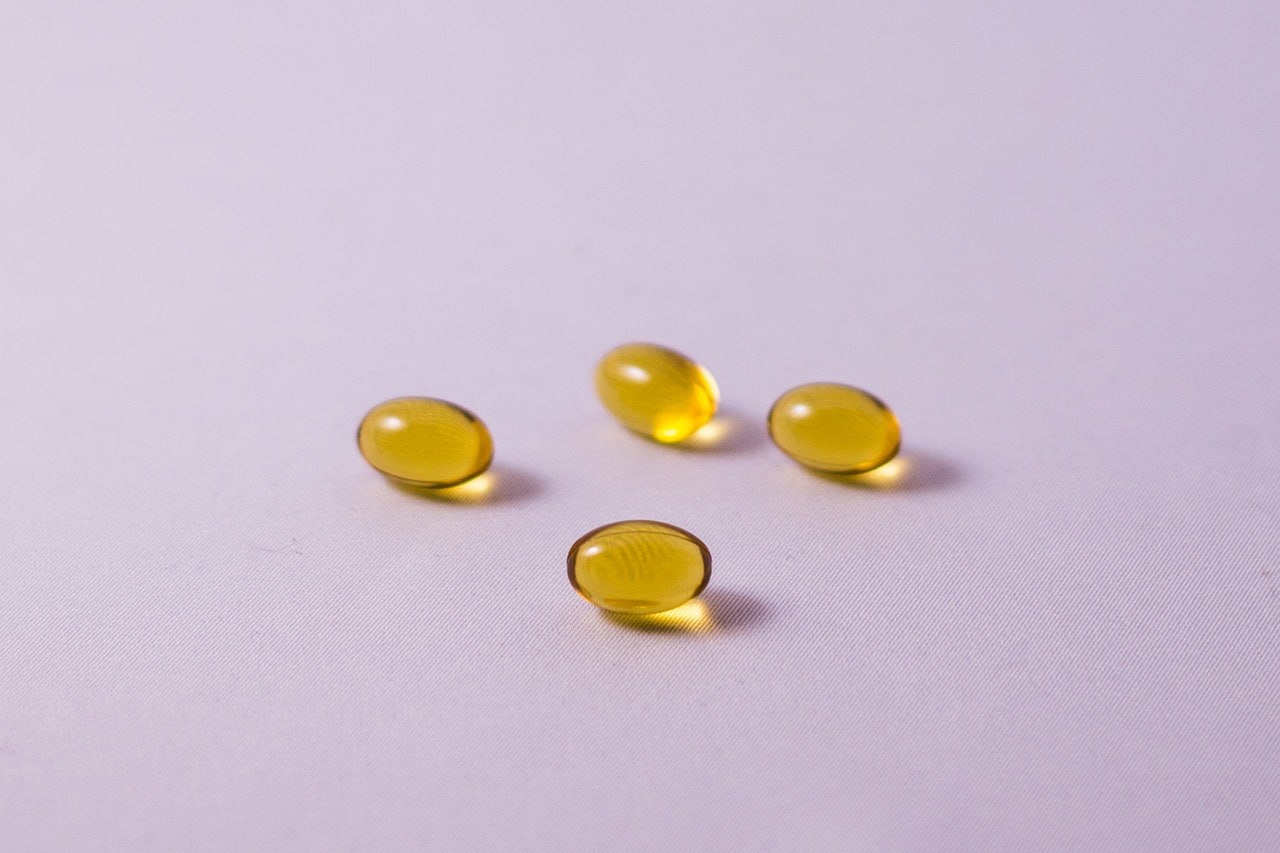
OMEGA-3+D3+K2-7: the perfect combination
Nutribiolite OMEGA-3 + D3 + K2-7 is a formula that provides pure fish oil that is highly concentrated in Omega-3 polyunsaturated fatty acids, vitamin D3 and vitamin K2-7.
Composition:
- Premium cold water fish oil (1000 mg), 80% concentrated in Omega-3 essential polyunsaturated fatty acids, with 50% EPA (eicosapentaenoic acid) and 25% DHA (docosahexaenoic acid).
- High content of vitamin D3 (cholecalciferol) with 1000 IU per dose (500% of the reference nutritional values RNV). This is the most effective form of vitamin D, due to its efficient conversion to calcifediol in the body. The other form of vitamin D is vitamin D2 or ergocalciferol. The potency of vitamin D2 is less than a third of that of vitamin D3 and its action in the body is shorter [1].
- Vitamin K in the form of menaquinone-7, MK-7 or K2-7, which is the most bioavailable form of vitamin K.
This article is a review of some of the most recent scientific papers, published in peer-reviewed journals, describing the beneficial properties of the combined supplementation of these three nutrients.
Omega-3 and Omega-6 essential fatty acids
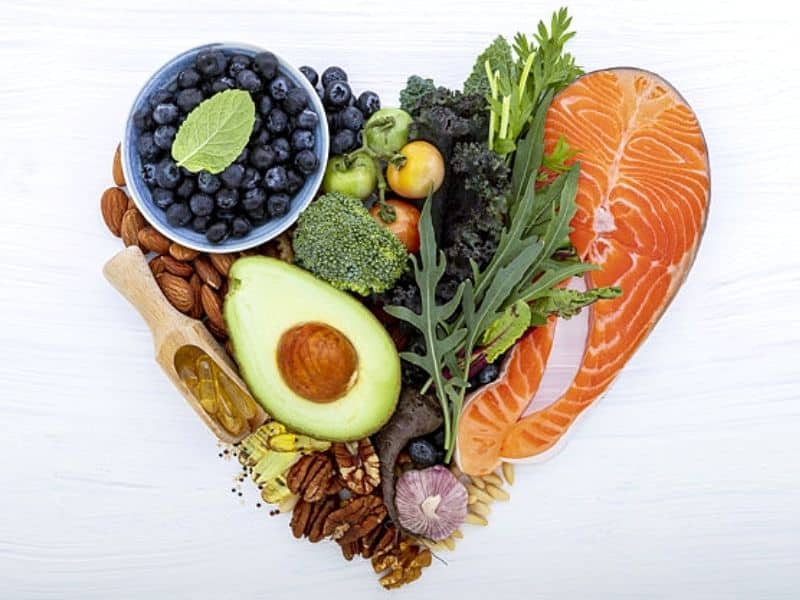
Essential polyunsaturated fatty acids (PFAs) are very important micronutrients, which cannot be synthesized by the body, and therefore must be obtained exogenously (externally), through the diet. These essential micronutrients are classified into Omega-3 (w-3) and Omega-6 (w-6) PFAs, according to their structural characteristics (the location of the carbon involved in the first double bond to be counted from the end of the chain of carbons). Omega-9 (w-9) fatty acids are monounsaturated and are not essential, since they can be synthesized in the human body.
Omega 3 and Omega 6 PFAs are important structural components of phospholipids in cell membranes. They are also necessary for the proper functioning of the body and that is why it is important that we incorporate them into the diet in the appropriate proportions. Unfortunately, throughout human evolution, we have drastically changed the proportions of consumed Omega-3 and Omega-6. This change has contributed to the epidemic of modern diseases. High intakes of Omega-6 are associated with an increase in the incidence of inflammatory diseases, such as cardiovascular diseases, cancer, diabetes, obesity, autoimmune diseases, asthma and depression, among others. Thus, since our diets are already inclined towards a greater consumption of Omega-6, we must not only increase the amount of Omega-3 in our diet, but also progressively decrease the intake of Omega-6. This can be done by eliminating processed food and reducing the consumption of vegetable oils such as soy, corn and sunflower oil. In this way we can restore the balance of Omega-3 / Omega-6 that is essential in the prevention and treatment of chronic diseases.
The anti-inflammatory properties of DHA and EPA
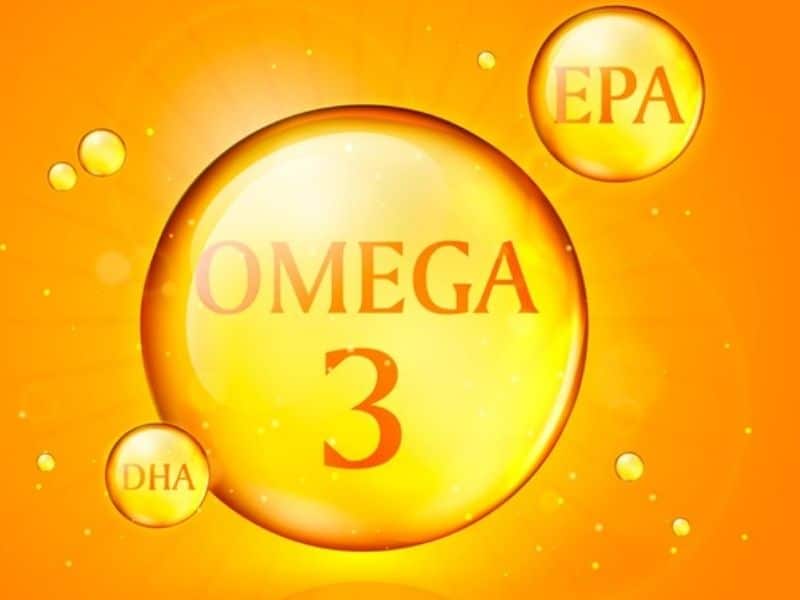
The first exponent of Omega-3 is α-linolenic acid (ALA) which, via enzymes D–-5 and D–-6 desaturases and elongases, can be transformed into eicosapentaenoic acid (EPA) and, later, into docosahexaenoic acid (DHA). EPA and DHA in general participate in metabolic pathways that have as final product 3-series prostaglandins, which have anti-inflammatory activity. In fact, EPA and DHA have been the focus of interest in a large number of investigations, as a result of their well-characterized anti-inflammatory and cytoprotective effects [2-4].
On the contrary, Omega-6 participates in metabolic pathways that end in the synthesis of pro-inflammatory agents. The first exponent of Omega-6 is linoleic acid (LA), which is transformed into arachidonic acid (AA), which in turn leads to a family of pro-inflammatory metabolites, such as 2-series prostaglandins that are potent mediators of inflammation, pain and fever and that ultimately exert the net pro-inflammatory effect of Omega-6 [5, 6].
Diets rich in EPA and DHA from Omega-3 increase the proportion of these two elements in cell membranes, particularly in lymphocytes. This, in addition to reducing the arachidonic acid (AA) content in cell membranes generated from the presence of Omega-6, by a competition effect, decreases the formation of proinflammatory products derived from it [7, 8].
Dietary supplementation with EPA and DHA is also capable of reducing the production of pro-inflammatory cytokines, such as interleukin-1, interleukin-6, interleukin-8, and tumor necrosis factor-α (TNF-α), which are released when macrophages and monocytes are activated [9]. The excess activity of these substances contributes to pathological inflammation, a situation observed in chronic intestinal inflammation [10], rheumatoid arthritis [11], among other inflammatory pathologies. TNF-α has an important role in the development of cachexia in cancer patients [12]. In this sense, dietary supplementation with EPA and DHA can reduce the production of inflammatory cytokines and the effects of TNF-α [13].
Omega-3s are found mainly in fish (especially cold-water fatty fish, such as salmon, mackerel, tuna, herring, and sardines) and in shellfish. Nuts and seeds also have Omega 3s, however, they are mainly composed of α-linolenic acid (ALA). ALA must be converted to EPA or DHA before your body can use it for more than just producing energy. However, this conversion process is ineffective in humans. Only a small percentage of ALA is converted to EPA, and even less to DHA [14-17].
In 2012, the Scientific Panel on Dietetic Products, Nutrition and Allergies of the European Food Safety Agency (EFSA) issued a new opinion on the maximum level of intake of EPA and DHA, where it concluded that supplementary intakes of combined EPA and DHA at doses up to 5 g / day, supplemental intakes of EPA up to 1.8 g / day and supplemental intakes of DHA up to 1 g / day, do not pose a safety risk for the adult population [18, 19]. In addition, it has recommended a daily intake of EPA and DHA, based on cardiovascular risk considerations, for European adults between 250 mg and 500 mg per day [19].
The Premium Quality of Nutribiolite OMEGA-3 + D3 + K2-7 Fish Oil:
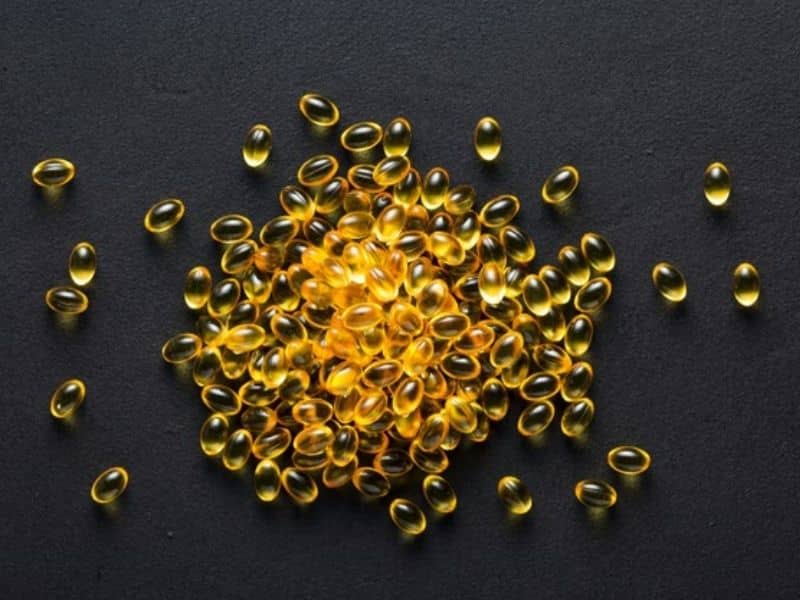
The fish oil used by Nutribiolite in OMEGA-3 + D3 + K2-7 is of premium quality and highly concentrated in EPA and DHA. Each dose provides 1000 mg fish oil, with 800 mg of Omega 3 that contains 500 mg of EPA and 250 mg of DHA, as suggested by EFSA daily intake recommendations. In addition, the OMEGA-3 + D3 + K2-7 formula also provides vitamins D3 and K2-7, about which we will discuss below. These two additional vitamins give to this product a beneficial and synergistic effect, as described in the most recent scientific bibliography.
Most fish oil-based food supplements have a concentration of Omega-3s of 35% to 50%. That is, for every 1000 mg of fish oil, you would actually only be consuming between 350 mg to 500 mg of Omega-3s. The fish oil in Nutribiolite´s OMEGA-3 + D3 + K2-7 is pharmaceutical grade and is obtained from an advanced purification and extraction method called “FLUTEX” that combines innovative technologies in the field of green chemistry. This technology allows the extraction, purification, separation and concentration of the Omega-3s, reaching the minimum final concentration of 80%. Solvents, high temperatures, or other aggressive conditions are not used in this process. In this way is obtained a product highly concentrated in Omega-3s and with high purity, compared to other chemical procedures that create isomers and other contaminants. In addition, it is important to mention that our fish oil is produced in Spain, by the SOLUTEX company, one of the most important companies in the fish oil production sector worldwide.
The combination of Omega-3, vitamin D and vitamin K for mental health
The neuroprotective effect:
The neuroprotective effect of DHA and EPA on nerve cells has been demonstrated in both human [20] and animal [21] studies and their mechanisms of action have been investigated in greater detail in in vitro cell models [22]. For example, in an interesting study with rats carrying diabetes mellitus, supplementation with Omega-3s (specifically DHA) made it possible to prevent anatomical and functional deterioration in neurons, a characteristic picture of diabetic neuropathy [23], and also reduce the oxidative damage and learning disabilities (Morris water maze model) in rats with traumatic brain injury [24]. In other studies, rats fed a diet low in DHA showed learning and cognitive function disorders, effects that were reversed when DHA supplementation is restored [25].
Another interesting study was focused on the neuroprotective effects of Omega-3s in Alzheimer’s disease, since patients with this disease have low levels of DHA in plasma and in their cell membranes [26].
In an animal model (mouse with Alzheimer’s disease), when administering a diet enriched with Omega-3s (EPA + DHA), a reduction in the accumulation of β-amyloid peptide (peptide with neurotoxic actions) was observed in more than 70% of the cases [27]. It is currently postulated that the Omega-3s DHA and EPA can be used as part of the treatment of multiple neuropathologies, in addition to diabetic neuropathy and Alzheimer’s disease, among which Parkinson’s disease [28, 29] and multiple sclerosis [30] and depression [31] stand out.
Serotonin is a fundamental neurotransmitter in the nervous system. The behavioral and neuropsychological processes modulated by serotonin include mood, perception, reward, anger, aggression, appetite, memory, sexuality and attention. Low serotonin levels are implicated in different mental illnesses such as depression, attention deficit hyperactivity disorder (ADHD), autism, bipolar disorder and schizophrenia [32,33]. Even various aspects of behavior, such as decision making and impulsivity, are linked to this vital neurotransmitter. Due to the importance of this neurotransmitter, the scientific community has been addressing this problem in order to investigate what factors can influence its production in the body. In this sense, it was discovered that vitamin D is essential to regulate the conversion of tryptophan (an essential amino acid) into serotonin. In addition, it has been verified that Omega-3 EPA increases serotonin release from presynaptic neurons by reducing series-2 prostaglandins, counteracting the effect of inflammatory signals in the brain, which inhibit the release of this neurotransmitter. DHA also participates in the action of various serotonin receptors, making them more accessible to serotonin, increasing the fluidity of the cell membrane in neurons [33].
Another important component of the Nutribiolite OMEGA-3 + D3 + K2-7 formula is vitamin K. This vitamin is involved in the synthesis of sphingolipids (lipids that are part of cell membranes), which are particularly abundant in neuronal cell walls [34]. Sphingolipids are involved in important processes such as cell division, differentiation, and aging, as well as the interaction between cells. Alterations in sphingolipid metabolism have been associated with cognitive impairment and the development of neurodegenerative diseases. Furthermore, studies indicate that vitamin K may also have a protective function against oxidative stress in myelin membranes, independent of its function in neuronal membranes [35].

Regarding the prevention of the accumulation of β-amyloid peptide plaques in the brain, we have an interesting article, talking about our new caffeine-free nootropic, MINFIRE. We also discussed the synthesis of serotonin in the body in another article about our other product 4Sleep. We recommend the combination of these two products with OMEGA-3 + D3 + K2-7 to help in the prevention of neurological disorders.
The combination of Omega-3, vitamin D and vitamin K for bone health
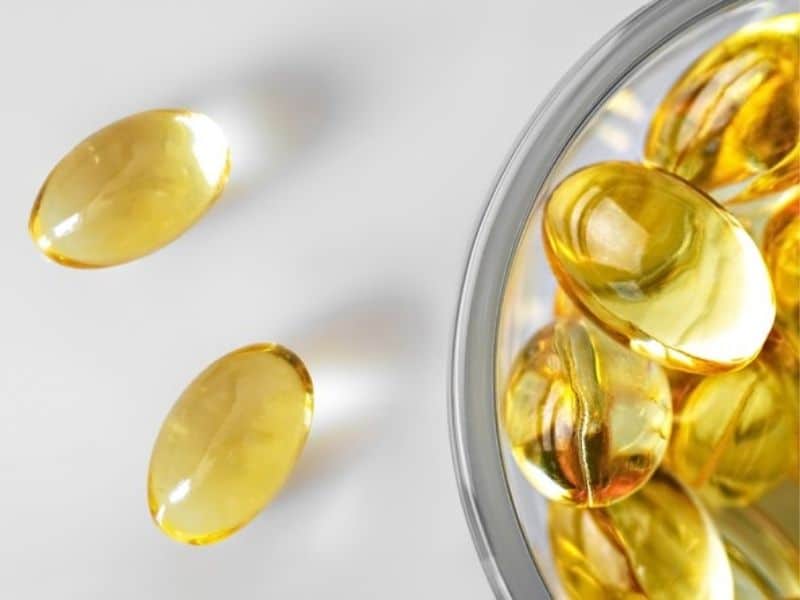
Among the vitamins involved in bone remodeling, vitamin D, an essential for the absorption and use of calcium in bones, deserves special attention. Furthermore, this vitamin acts on osteoblasts, favors the formation of various proteins in the bone matrix and modulates bone growth by inhibiting its degradation [36].
In turn, vitamin K is involved in gamma-carboxylation processes necessary in the synthesis of various proteins of the bone matrix, of which osteocalcin, which is known to be responsible for the integration of calcium in the bones [37 -39]. Omega-3s are beneficial for bone health. They act by modulating the activity of osteoclasts and osteoblasts and also controlling inflammatory processes and calcium metabolism [40-42].
Each dose of Nutribiolite OMEGA-3 + D3 + K2-7 provides:
- 1000 mg of fish oil with 800 mg of Omega-3, of which 500 mg are EPA and 250 mg DHA
- 1000 IU (50 mcg) of vitamin D in its most active form, vitamin D3
- 50 mcg of Vitamin K (66.7% of the NRV) in its most active form, menaquinone-7 (MK7 or vitamin K2-7)
The importance of vitamin K for the regulation of blood clotting.
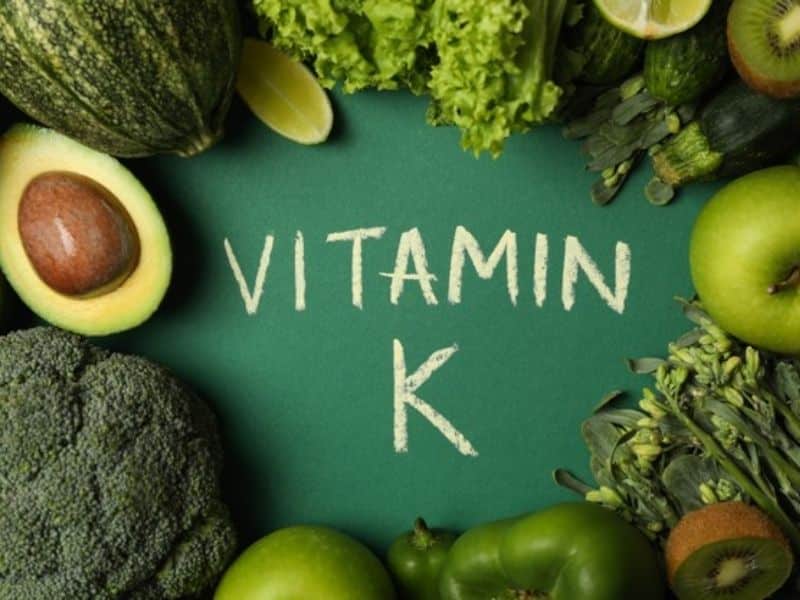
Another important function of vitamin K is the formation of clotting factors, essential for the regulation of blood clotting. The blood clotting process depends on the cascade activation of a series of clotting factors (specific proteins) responsible for stopping bleeding by forming clots. In the activation of the seven existing coagulation factors, vitamin K plays a decisive role as a cofactor of an enzyme that catalyzes the carboxylation (gamma-carboxylation, the introduction of a carboxyl group, -COOH) of certain glutamic acid residues in the coagulation factors to form gamma-carboxyglutamate (GLA) [39, 43]
Omega-3 in the prevention of cardiovascular diseases

The first data that evidenced the cardioprotective effects of Omega-3s in humans, arose from studies carried out in Eskimos (the Inuits), who despite having a high fat intake (greater than 30% of the energy requirements), with marine animals (mammals and fish rich in these lipids) being identified as the dietary source of these fats, had a very low incidence of cardiovascular diseases [44].
Within cardiovascular diseases, atherosclerosis is a pathophysiological process of multifactorial origin with long-term development. Two main components stand out in this process; dyslipidemia (high triglycerides and cholesterol) and inflammation. Fish oil has been shown to lower plasma cholesterol and TG levels through inhibition of very low-density lipoprotein (VLDL) and TG biosynthesis in the liver, without altering high-density lipoprotein biosynthesis ( HDL) [45].
- Armas, L.A., B.W. Hollis, and R.P. Heaney, Vitamin D2 is much less effective than vitamin D3 in humans. J Clin Endocrinol Metab, 2004. 89(11): p. 5387-91.
- Calder, P.C., n-3 polyunsaturated fatty acids, inflammation, and inflammatory diseases. Am J Clin Nutr, 2006. 83(6 Suppl): p. 1505s-1519s.
- Trebble, T.M., et al., Prostaglandin E2 production and T cell function after fish-oil supplementation: response to antioxidant cosupplementation. Am J Clin Nutr, 2003. 78(3): p. 376-82.
- Simopoulos, A.P., Omega-3 fatty acids in inflammation and autoimmune diseases. J Am Coll Nutr, 2002. 21(6): p. 495-505.
- Sampath, H. and J.M. Ntambi, Polyunsaturated fatty acid regulation of genes of lipid metabolism. Annu Rev Nutr, 2005. 25: p. 317-40.
- Yates, C.M., P.C. Calder, and G. Ed Rainger, Pharmacology and therapeutics of omega-3 polyunsaturated fatty acids in chronic inflammatory disease. Pharmacol Ther, 2014. 141(3): p. 272-82.
- Lapillonne, A., S.D. Clarke, and W.C. Heird, Polyunsaturated fatty acids and gene expression. Curr Opin Clin Nutr Metab Care, 2004. 7(2): p. 151-6.
- Sessler, A.M. and J.M. Ntambi, Polyunsaturated fatty acid regulation of gene expression. J Nutr, 1998. 128(6): p. 923-6.
- Camuesco, D., et al., Intestinal anti-inflammatory activity of combined quercitrin and dietary olive oil supplemented with fish oil, rich in EPA and DHA (n-3) polyunsaturated fatty acids, in rats with DSS-induced colitis. Clin Nutr, 2006. 25(3): p. 466-76.
- Nieto, N., et al., Dietary polyunsaturated fatty acids improve histological and biochemical alterations in rats with experimental ulcerative colitis. J Nutr, 2002. 132(1): p. 11-9.
- Hurst, S., et al., Dietary fatty acids and arthritis. Prostaglandins Leukot Essent Fatty Acids, 2010. 82(4-6): p. 315-8.
- Szymanski, K.M., D.C. Wheeler, and L.A. Mucci, Fish consumption and prostate cancer risk: a review and meta-analysis. Am J Clin Nutr, 2010. 92(5): p. 1223-33.
- Martins de Lima-Salgado, T., et al., Modulatory effect of fatty acids on fungicidal activity, respiratory burst and TNF-α and IL-6 production in J774 murine macrophages. British Journal of Nutrition, 2011. 105(8): p. 1173-1179.
- Burdge, G.C., Metabolism of alpha-linolenic acid in humans. Prostaglandins Leukot Essent Fatty Acids, 2006. 75(3): p. 161-8.
- Brenna, J.T., Efficiency of conversion of alpha-linolenic acid to long chain n-3 fatty acids in man. Curr Opin Clin Nutr Metab Care, 2002. 5(2): p. 127-32.
- Plourde, M. and S.C. Cunnane, Extremely limited synthesis of long chain polyunsaturates in adults: implications for their dietary essentiality and use as supplements. Appl Physiol Nutr Metab, 2007. 32(4): p. 619-34.
- Gerster, H., Can adults adequately convert alpha-linolenic acid (18:3n-3) to eicosapentaenoic acid (20:5n-3) and docosahexaenoic acid (22:6n-3)? Int J Vitam Nutr Res, 1998. 68(3): p. 159-73.
- Sánchez, A.M., et al., Informe del Comité Científco de la Agencia Española de Consumo, Seguridad Alimentaria y Nutrición (AECOSAN) sobre objetivos y recomendaciones nutricionales y de actividad física frente a la obesidad en el marco de la Estrategia NAOS. Revista del comité científico de la Agencia Española de Consumo, Seguridad Alimentaria y Nutrición (AECOSAN), 2015. 19: p. 95-209.
- Scientific Opinion on the Tolerable Upper Intake Level of eicosapentaenoic acid (EPA), docosahexaenoic acid (DHA) and docosapentaenoic acid (DPA) – EFSA Panel on Dietetic Products, Nutrition and Allergies (NDA). EFSA Journal, 2012. 10(7).
- Mozaffarian, D., et al., Cardiac Benefits of Fish Consumption May Depend on the Type of Fish Meal Consumed. Circulation, 2003. 107(10): p. 1372-1377.
- Lauritzen, I., et al., Polyunsaturated fatty acids are potent neuroprotectors. The EMBO journal, 2000. 19(8): p. 1784-1793.
- Högyes, E., et al., Neuroprotective effect of developmental docosahexaenoic acid supplement against excitotoxic brain damage in infant rats. Neuroscience, 2003. 119(4): p. 999-1012.
- Mayurasakorn, K., et al., Docosahexaenoic acid: brain accretion and roles in neuroprotection after brain hypoxia and ischemia. Curr Opin Clin Nutr Metab Care, 2011. 14(2): p. 158-67.
- Gerbi, A., et al., Fish Oil Supplementation Prevents Diabetes-Induced Nerve Conduction Velocity and Neuroanatomical Changes in Rats. The Journal of Nutrition, 1999. 129(1): p. 207-213.
- Wu, A., Z. Ying, and F. Gomez-Pinilla, Dietary omega-3 fatty acids normalize BDNF levels, reduce oxidative damage, and counteract learning disability after traumatic brain injury in rats. J Neurotrauma, 2004. 21(10): p. 1457-67.
- Catalan, J., et al., Cognitive deficits in docosahexaenoic acid-deficient rats. Behav Neurosci, 2002. 116(6): p. 1022-31.
- Söderberg, M., et al., Fatty acid composition of brain phospholipids in aging and in Alzheimer’s disease. Lipids, 1991. 26(6): p. 421-5.
- Bazan, N.G., Cell survival matters: docosahexaenoic acid signaling, neuroprotection and photoreceptors. Trends Neurosci, 2006. 29(5): p. 263-71.
- Calon, F. and G. Cole, Neuroprotective action of omega-3 polyunsaturated fatty acids against neurodegenerative diseases: evidence from animal studies. Prostaglandins Leukot Essent Fatty Acids, 2007. 77(5-6): p. 287-93.
- Mehta, L.R., R.H. Dworkin, and S.R. Schwid, Polyunsaturated fatty acids and their potential therapeutic role in multiple sclerosis. Nat Clin Pract Neurol, 2009. 5(2): p. 82-92.
- Rondanelli, M., et al., Long chain omega 3 polyunsaturated fatty acids supplementation in the treatment of elderly depression: effects on depressive symptoms, on phospholipids fatty acids profile and on health-related quality of life. J Nutr Health Aging, 2011. 15(1): p. 37-44.
- Cook, E.H. and B.L. Leventhal, The serotonin system in autism. Curr Opin Pediatr, 1996. 8(4): p. 348-54.
- Patrick, R.P. and B.N. Ames, Vitamin D and the omega-3 fatty acids control serotonin synthesis and action, part 2: relevance for ADHD, bipolar disorder, schizophrenia, and impulsive behavior. The FASEB Journal, 2015. 29(6): p. 2207-2222.
- Ferland, G., Vitamin K, an emerging nutrient in brain function. Biofactors, 2012. 38(2): p. 151-7.
- Christakos, S., et al., Vitamin D endocrine system and the intestine. BoneKEy reports, 2014. 3: p. 496-496.
- Weber, P., Vitamin K and bone health. Nutrition, 2001. 17(10): p. 880-7.
- van Ballegooijen, A.J., et al., The Synergistic Interplay between Vitamins D and K for Bone and Cardiovascular Health: A Narrative Review. Int J Endocrinol, 2017. 2017: p. 7454376.
- Wen, L., et al., Vitamin K‑dependent proteins involved in bone and cardiovascular health (Review). Mol Med Rep, 2018. 18(1): p. 3-15.
- Farina, E.K., et al., Protective effects of fish intake and interactive effects of long-chain polyunsaturated fatty acid intakes on hip bone mineral density in older adults: the Framingham Osteoporosis Study. Am J Clin Nutr, 2011. 93(5): p. 1142-51.
- Kruger, M.C. and D.F. Horrobin, Calcium metabolism, osteoporosis and essential fatty acids: a review. Prog Lipid Res, 1997. 36(2-3): p. 131-51.
- Kruger, M.C., et al., Calcium, gamma-linolenic acid and eicosapentaenoic acid supplementation in senile osteoporosis. Aging (Milano), 1998. 10(5): p. 385-94.
- Shearer, M.J. and P. Newman, Recent trends in the metabolism and cell biology of vitamin K with special reference to vitamin K cycling and MK-4 biosynthesis. J Lipid Res, 2014. 55(3): p. 345-62.
- Petrova, S., et al., The global availability of n-3 fatty acids. Public Health Nutr, 2011. 14(7): p. 1157-64.
- Alessandra Manerba, E.V., Marco Metra, Livio Dei Cas, n-3 PUFAs and cardiovascular disease prevention. Future Cardiology, 2010. 6(3): p. 343-350.
Subscribe to our newsletter to save 5% on your first order.
This offer can be combined with all the other offers in the website.
Thank you!
You have successfully joined us. Please check your email with the discount code.
Subscribe to our newsletter to save 5% on your first order.
Thank you!
You have successfully joined us. Please check your email with the discount code.





